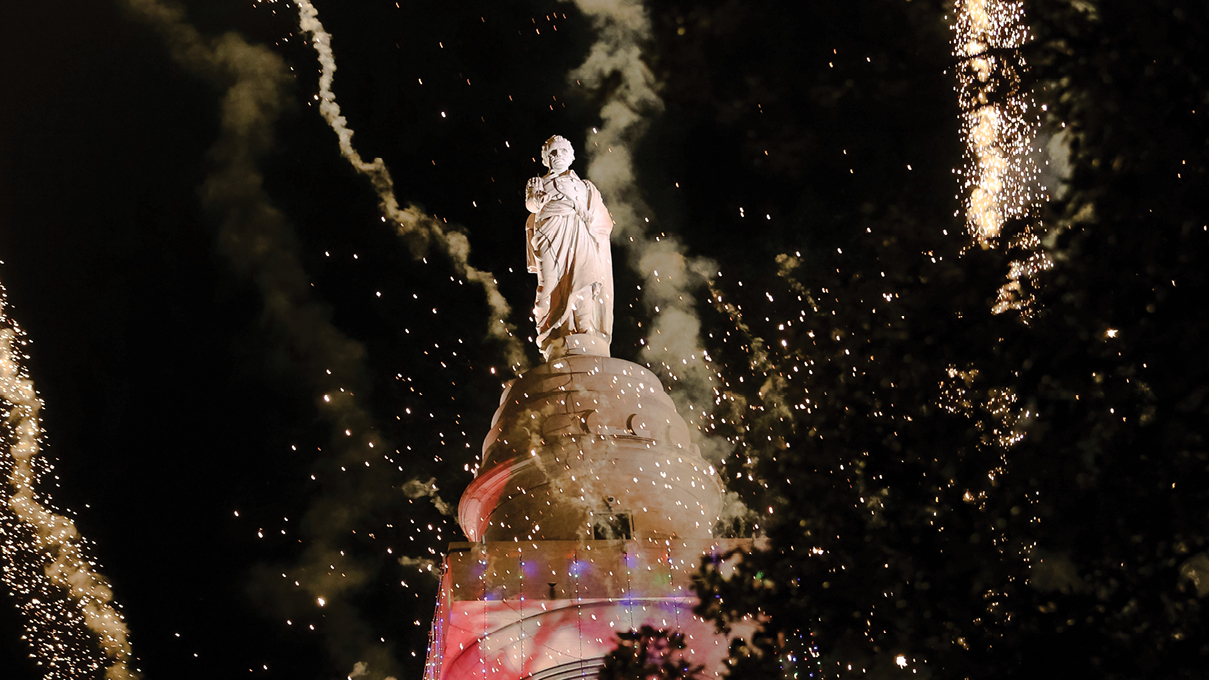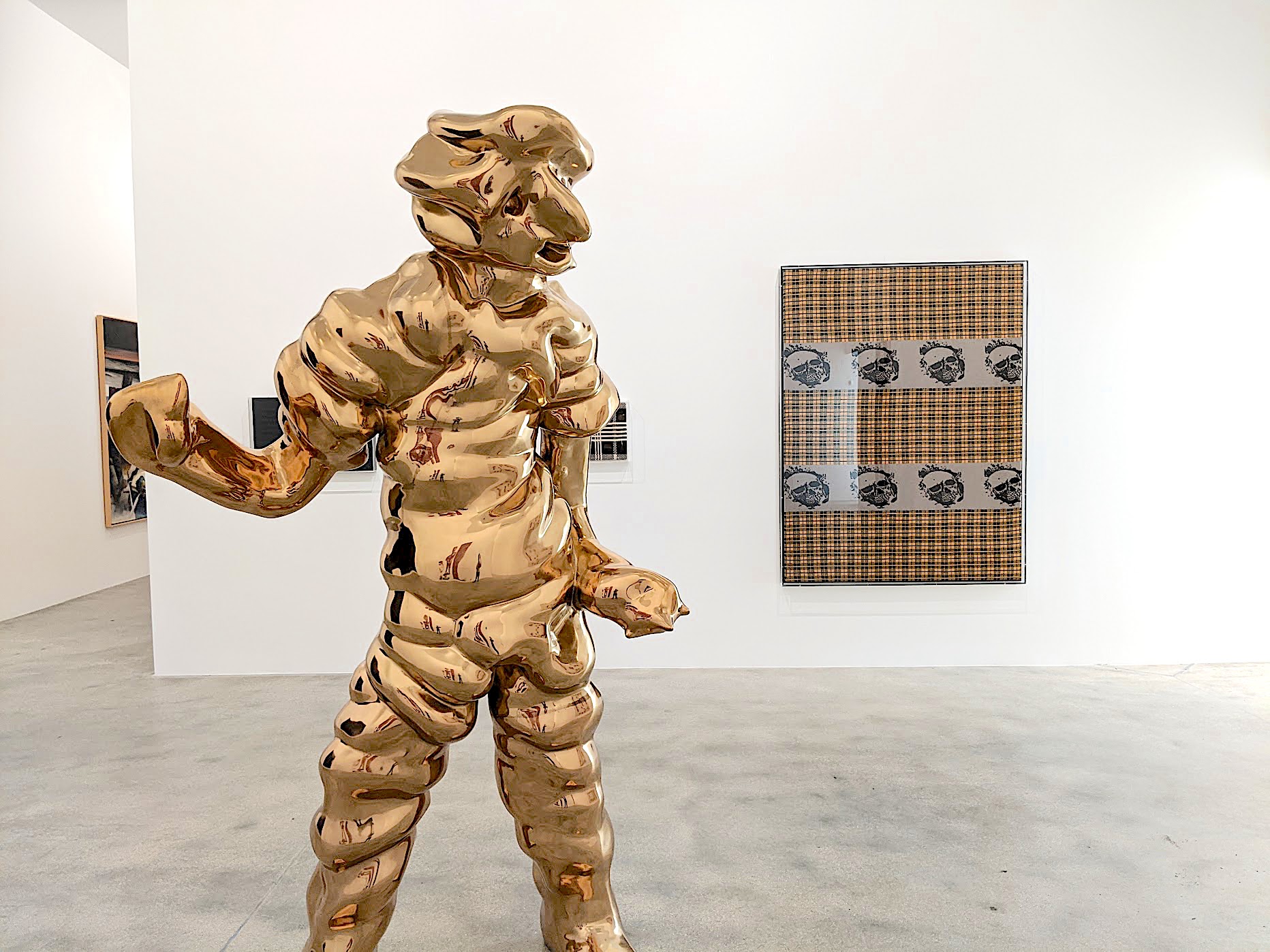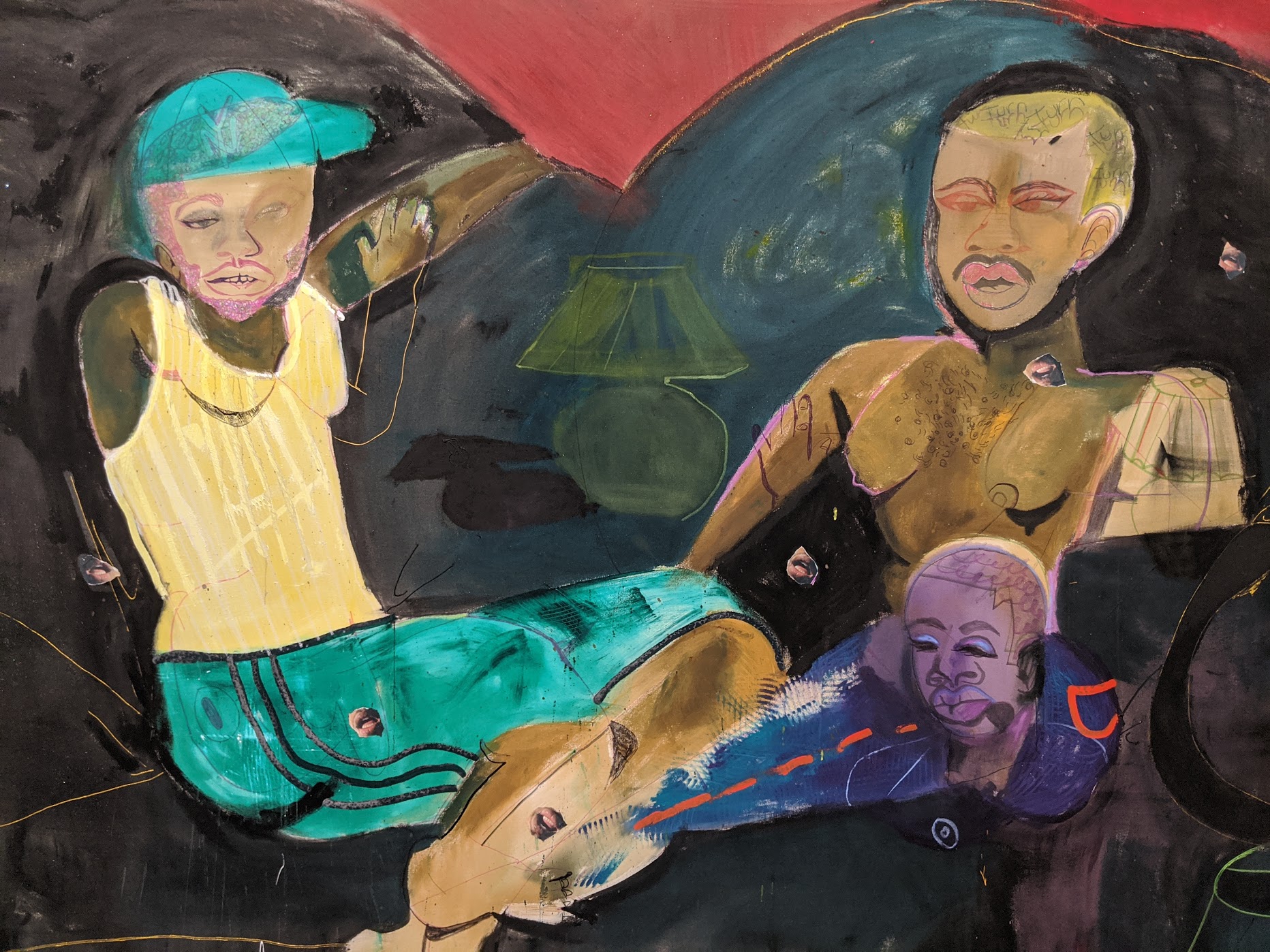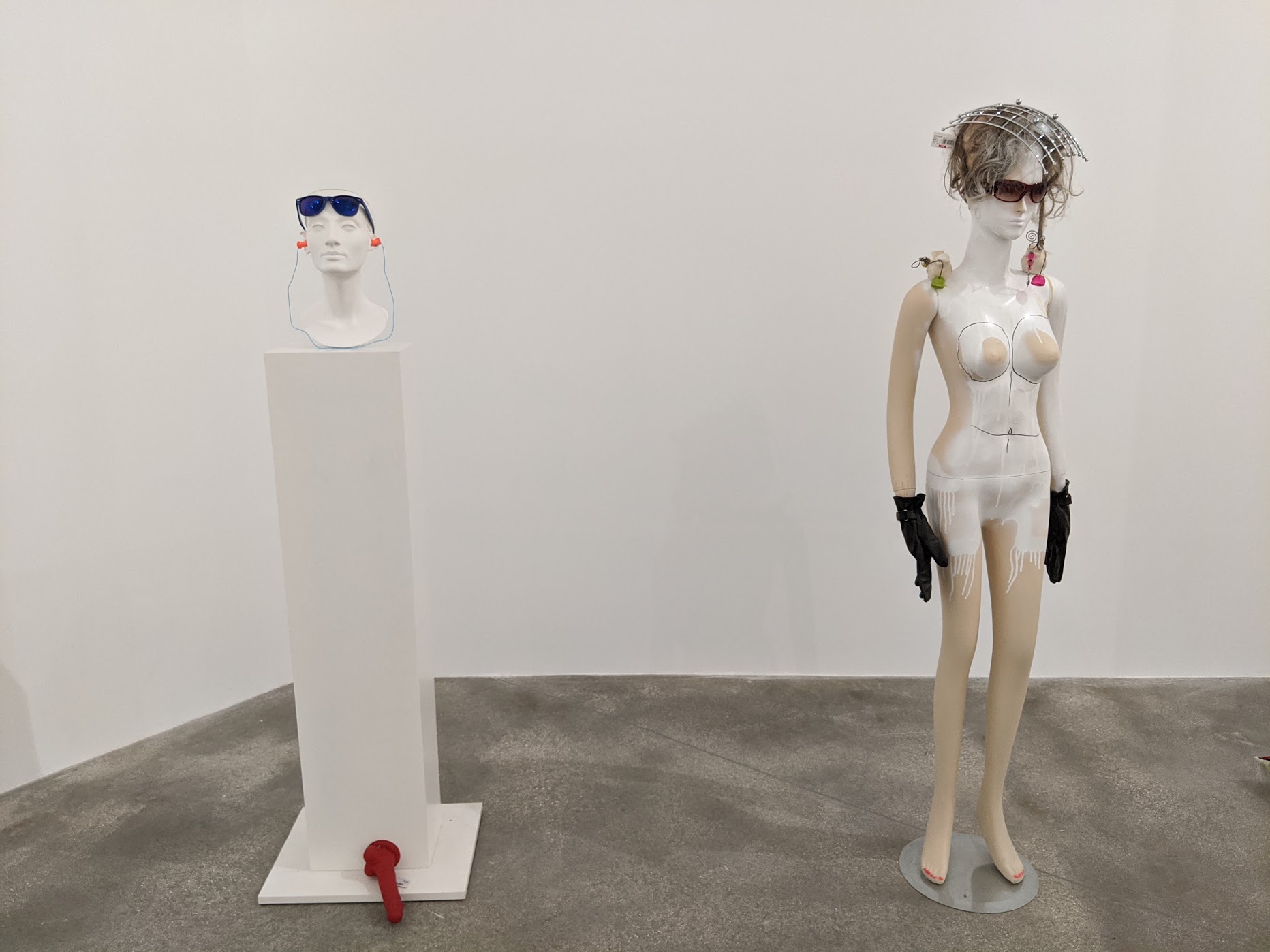Mera Rubell may be the only art collector in Miami who has ridden the city’s oft-forgotten metro. And she’s a fan. I know this because I have just arrived by train to tour her family’s brand new museum a few weeks ahead of its opening, and she gives me a triumphant high-five for taking public transit in a city better known for sports cars.
Rubell leads me through the sprawling, 100,000-square-foot campus of former warehouses, announcing as we enter each cavernous gallery, “Michael is our first visitor to take the metro! Michael took the train!” The Rubell Museum is an ant farm of activity—art handlers, construction workers, and assorted museum personnel are busy preparing for the inaugural show—and Mera Rubell is the benevolent queen, stopping to chat and introduce me to nearly everyone whose path we cross. When the New York transplant talks about the elevated train outside, there’s a hint of vindication in her voice—most people probably thought the Rubells were crazy for relocating their collection from their longtime home in now-buzzy Wynwood to a quite-literally “wrong-side-of-the-tracks” corner of post-industrial Allapattah.
But Mera and Don Rubell—her husband and collecting partner of more than half a century—have a knack for spotting diamonds in the rough. It’s a talent that has served the family well in their acquisitions of both real estate and art. They arrived in a devastated Miami shortly after Hurricane Andrew in the early 1990s, making a home for themselves and their collection in a former DEA warehouse in Wynwood back when saying it was one of the most Instagram-able neighborhoods would’ve meant it was easy to score a fast bag of coke. They brought with them a collection of art assembled mostly in New York through the tumultuous 1970s and ’80s. Rubell describes them as “the worst possible times” for both cities, but adds that the family “found tremendous opportunities… and where do you do that? You need to go to frontiers!”
I mention the Lord Baltimore Hotel, the gorgeous 1920s highrise the Rubells purchased and restored in Downtown Baltimore, and her response is all enthusiasm: “Where else could we buy a 440-room hotel? But that’s the kind of decision that was informed so much by aesthetics. That’s the type of investment I’m not sure we would’ve made if we didn’t love art.”
 Collector Mera Rubell photographed with Cady Noland sculpture
Collector Mera Rubell photographed with Cady Noland sculpture
There’s a rare connoisseurial instinct Rubell has that transcends the “aesthetic” in the conventional sense. Wandering room after room of the eclectic collection, I’m struck by not only how good the family’s taste is, but by its wild diversity. Seeing the scope and scale of their holdings is one of the treats (and primary motivation) of this expansive new space. We pause in Cady Noland’s oddly enthralling 1989 installation This Piece Has No Title Yet, which the Rubells acquired a few years after moving to Miami. “The cover of our highlights catalog has Cady Noland at the core, because being able to have this piece [continually on display] just keeps informing us. I think it allows us to continue to collect, realizing that we never know what we’re going to collect! We never know what artists are going to make… because who figured that we would collect a sculpture that’s made out of Budweiser beer cans? And think ‘it’s a masterpiece!’? I mean, somehow we did believe it, but now more than 20 years later, it still holds.”
Standing in the Noland work, I’m struck by its eerie gravity—a grid of aluminum cans and scaffolding with the striking formal power of high minimalist sculpture. Yet it’s not quite minimal, and not quite readymade. The materials bring to mind a flurry of associations with class, consumption, masculinity, and Americana. There’s a palpable electric tension between the not-quite-sterile beauty of the space and its semiotics that gets me every time I see it. And in this context, occupying its own room, it speaks to the Rubells’ willingness and means to go big.
If there is one unifying formal thread throughout the inaugural hang of this museum, it is scale. Massive works abound, feeling both monumental and enjoying a luxurious amount of breathing room. There are few other urban museums that could pull off an install like this.
Speaking in reference to a concurrent exhibition of excerpts from her collection on loan to the Barnes in Philadelphia, 30 Americans, Rubell confesses, “I’m thankful they didn’t have room for everything!” We’re passing by a 25-foot-long Kehinde Wiley masterpiece titled “Sleep.” I think it might be both the largest and most opulent Wiley I’ve seen in real life. The reclining figure looms epic, and its placement in the hangar-like space plays up the piece’s sense of decadence.
The exhibition at the Barnes is a veritable “who’s who” of contemporary African American artists. But what’s more impressive is the ability to curate such a touring exhibition without the inaugural hang of the Rubell Museum feeling diluted—it’s a testament to the Rubell’s long-held practice of supporting artists of color, women, and queers that the collection feels diverse and well-rounded even with the works of 30 Black A-listers out on loan.

Again, part of that comes down to scale. The massive warehouse space can easily accommodate a mural-like, twelve-panel woodcut by Kerry James Marshall that would look cramped in most galleries. Here, the epic work adds an almost theatrical backdrop for a room focused on African American artists. And refreshingly, the curation doesn’t play into the popular tropes of exoticizing non-white artists. Rubell explains why she loves the piece: “Marshall is saying, ‘Look, here we are—just a bunch of human men having tea in a normal living room. Why isn’t there more representation of African American life like this? Just normalcy?’”
The ultra-flat mise-en-scène feels like an almost-comfortingly mundane wallpaper grounding the gallery in the domestic. It’s fitting, because like nearly every art object in the collection, Rubell has a deeply personal story attached to the pieces in the room. Two of the other artists—married couple Karon and Noah Davis—met through an exhibition Rubell curated and later had a child. When Noah tragically died from a rare cancer, Karon created a surreal, life-size sculpture of the family. They have antlers, and they’re cradling their young son, also with antlers. It’s a heartbreaking work, conveying a sense of vulnerability and fear.
It’s in front of Karon Davis’s sculpture that I notice something unique about Rubell—she’s an interview subject who tends to ask more questions than she answers. She seems more honestly invested in a visitor’s subjective experience with artwork than perhaps any other collector I’ve met, which reminds me of something a Miami-based artist once told me: “Mera collects ‘art objects,’ but really she collects people.”
That thought sticks with me as we walk through the galleries containing the family’s encyclopedic collection of art from the legendary New York Downtown scene of the late ’70s and ’80s. There’s a Louise Lawler photograph of the Rubells’ New York apartment in 1982, hanging opposite the work it documents in their home. And then there’s an entire gallery hung with grade-A Keith Harings. Like nearly all of the artists in the collection, the Harings represent some of the best examples of the late artist’s prolific oeuvre. He was a very close friend of the Rubells, and a large painting in their collection is the last he completed before his death from AIDS.
As we sit down to talk near the entrance to the museum, the family’s gregarious approach to collecting becomes apparent as it relates to the museum’s new architectural logic and rebranding. “You know, one of the reasons we changed the name [from the Rubell Family Collection] was because after being here 26 years—in the old space—I would meet people and they would say ‘Uh, can we, um, can we come and see your collection or something?’ You got to be kidding! We’re open! I mean, we’ve been open public hours all these years,” Rubell says. “People didn’t know, even locally, to this day. People just don’t know what ‘a collection’ is. But they do know what a museum is, right? So we feel it’s worth it to go through all this trouble. Let’s have a name that actually says to people that it’s public! I think that when we first started 26 years ago, we were certainly not comfortable calling ourselves a museum because we didn’t even know what we were. We just had been collectors. And at some point we opened our collection to the public. But over these years, I think we are now. We’re both collectors and a museum. And it’s a privilege to call yourself a museum.”
That’s a duality that has always existed with the collection—the old property was both exhibition space and the family’s home, which had to be sold to finance this massive renovation project. And the new location—for all its internal logic that makes for exquisitely functional and dramatic museum space—speaks an architectural language that blends institutional, private, public, and industrial design cues. It’s less like what we have come to expect a starchitect-designed “Miami museum” to look like in this past decade (think the glory of PAMM’s monumental “Parthenon on a parking garage” or ICA’s somewhat garish cladding competing with the gaudy facades of the Design District) and more like the understated adaptive reuse projects Miami’s mid-tier gallerists have been quietly completing in Little Haiti.
It’s a subtle, respectful intervention in its industrial context. The Rubells first bought the complex of six warehouse pavilions with the intention of using them as affordable storage for their collection that had outgrown the Wynwood building. But after a few site visits, the former rice and bean warehouses—surrounded by train tracks, wholesale fruit markets, and a takeout place Mera Rubell swears has the best barbecue in Miami—began to reveal their true potential.
“I like to think we only invest in buildings that have some architectural integrity, but if you had seen these in their original state, you would never think, ‘this is architecture,’” Rubell says. “Because it wasn’t architectural from the point of view of facade—but in terms of the internal volumes, as you can see walking around. I walked in and saw these 12-foot ceilings. And then you’ve got 13-foot ceilings, you’ve got 18-foot ceilings! These perfect-height ceilings—of a so-gorgeous scale. The interiors were just perfect.”


The Rubells interviewed several architects before choosing Annabelle Selldorf, the starchitect of choice for basically every blue-chip gallery in New York and London. Her solution was to paint the building’s various exterior facades a homogenizing neutral grey and stitch the distinct structures together with a circulatory spine. The end result is a series of flexible exhibition spaces that can be closed or opened as wings for rotating hangs. Walking through the space, one could easily forget that the buildings weren’t purpose-built as a museum with a spatial logic not unlike the private Glenstone museum outside of DC. But traces of the industrial heritage remain—generously-sized loading doors, patinated concrete, and just enough idiosyncrasies to soften the sterility of the white box and give the space a sense of history. In the entrance way, the front desk offers a sensuous, organic counterpart to so many cold surfaces. The museum’s director, Juan Roselione-Valadez, upcycled a felled tree he found on the edge of Miami Dade’s sprawl and milled it into a one-of-a-kind piece of furniture to provide a warm, welcoming beacon to greet visitors.
“I think it’s valuable to find something that has some history,” Rubell explains. “That’s very precious, because I think you still feel the warehouse here—it still has that layer. In Miami everywhere you go it’s new, new, new. Don’t get me wrong—I think the new is great! But there comes a point where you cherish something that speaks of some kind of history—of some kind of layering. This is a young city. We don’t have 300-year-old buildings here.”
The exterior of the building retains its low profile, the only major intervention being the insertion of a series of subtle, rhythmic windows, which Seldorf explained to Rubell as “the interior presenting itself to the exterior… leaving some of the aesthetic of the warehouse, but with this rhythmic repetition that will be like the eyes of the building.”
“That’s important even for this neighborhood—the fact that this was a rice and beans warehouse.” But the most important, generous change has been the landscaping. They took care to replace the street-facing loading docks with a natural landscape of native endangered plants, providing both a habitat for wildlife and a semi-public oasis in a neighborhood lacking meaningful public spaces. It’s one of those many parts of inland Miami that lacks architectural opportunities for a vibrant street life, and here the Rubells have gifted a patio and restaurant that serve as a front porch for the austere block. Gesturing to the small patch of reclaimed everglade ecosystem, Rubell beams, “This was 10 loading bays, you’d see trucks and concrete, but now you can hear birds out there.”
“The new Rubell Museum is a subtle, respectful intervention in its industrial context.” – Michael Anthony Farley
It’s uncertain how long the Rubell’s urban oasis will remain tranquil—Miami’s real estate market metabolizes rumors of “opportunity” at a breakneck speed. The humble Santa Clara station is a midpoint on the surprisingly speedy metro, shrinking the psychogeographical distance between Miami International Airport and increasingly gentrified Downtown. The neighborhood is far enough inland to be relatively safe from ever-rising tides and storm surges. And the Rubells have always been tastemakers, luring Art Basel to Miami Beach, back when it still had a reputation as a sleazy strip of dilapidated hotels. Already, Dior is planning a fashion show on the once un-glamorous Allapattah block this week. And just blocks away, a Bjarke Ingels-designed megaproject is about to plop a towering Singapore superblock over the area’s low-slung produce markets.
Rubell isn’t too concerned about capital displacing culture though. She’s lived through enough cycles of boom-and-bust to understand that the market can drive reinvention. “Is it terrible? In some ways. Because I know what we just went through to go from there to here. [Having to keep moving] tests how much creativity, how much commitment, how much meaning we have to figure out how to make it happen. I once once asked ‘can we do it?’ How do we deal with transition? All these issues challenge your commitment to what’s important. Every artist has to deal with real estate. That is a condition of life… The more ambitious you become, you have to relocate, prices go up, you have to find another neighborhood. It’s like eating: real estate is a condition. Physical existence is real estate.”
After decades of watching places renew themselves like forests after a fire, Rubell has no regrets about her practice outgrowing her former home, even as Wynwood economically outgrew her institution’s substantial means. “I think art has to reinvent itself. So when a place closes, it’s not dead. It’s a way for people to reinvent their purpose—to reinvent their commitment. It’s not a terrible thing. We had to reinvent ourselves. Challenges—that’s what artists do! I think without challenges, there probably wouldn’t be great art.”


Photos by the author.










